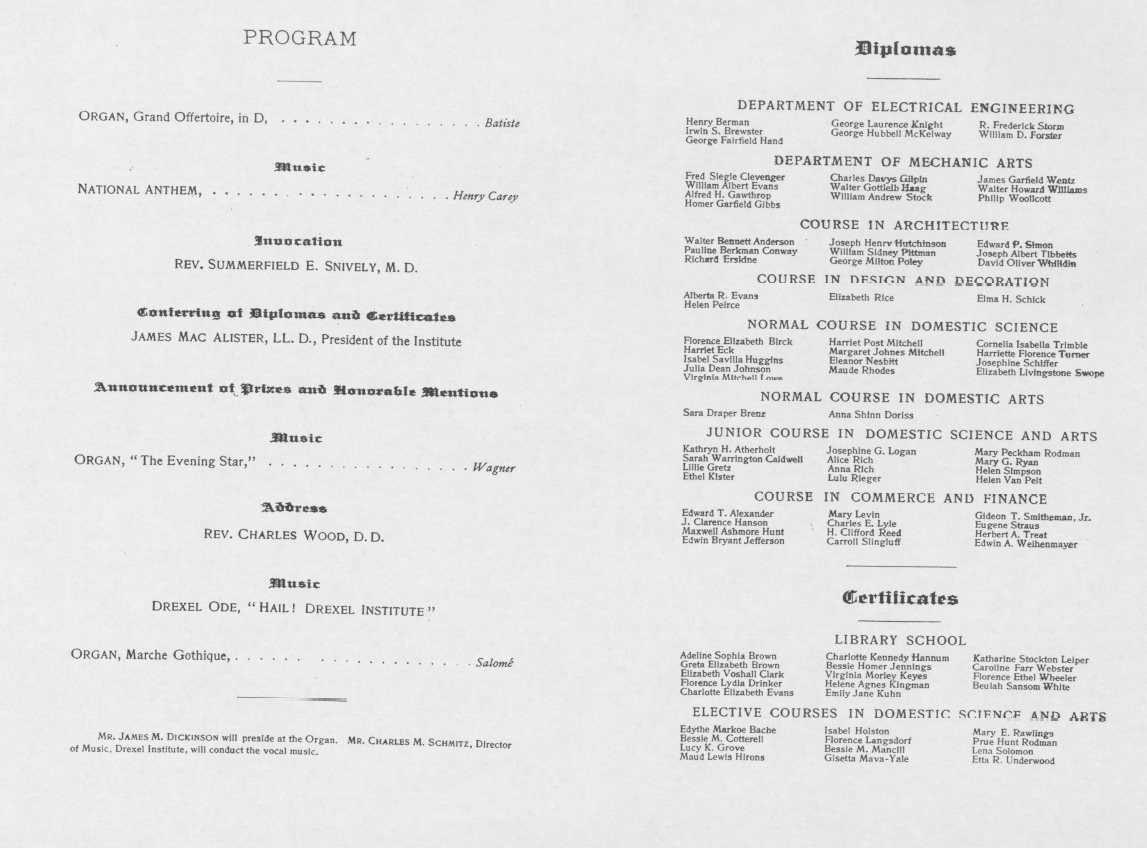Meet Drexel’s First Black Male Graduate: William Sidney Pittman

This article is part of the “Faces of Drexel” series honoring Drexel’s history as part of the Universitywide celebration of the 125th anniversary of Drexel’s founding in 1891.
The first Black man to graduate from what was then the Drexel Institute of Art, Science and Industry left behind a legacy not just on campus, but for the entire nation. William Sidney Pittman rose to national prominence as a high-profile Black architect and the first to obtain a federal commission. Ultimately, he designed over 50 buildings across the country, many of which were created for Black communities and presented as examples for other Black architects to aspire to. Several buildings — including his family home and community buildings — are state or National Historical Landmarks.
Pittman, the son of a former slave, graduated from the Tuskegee Institute, the country’s preeminent historically Black architectural school, with a degree in architectural drawing in 1897. Booker T. Washington, the institute’s principal, arranged for Tuskegee to financially support three years of studies at the newly created Drexel Institute of Art, Science and Industry if he paid off his debt by teaching at the Tuskegee.
Once at Drexel, Pittman worked with President James A. MacAlister and Arthur Truscott, architecture professor and department head, to finish his five-year program in three years through “a very different but more extraordinary and a more elaborate course than usual,” as he wrote to Washington. He described his first impression of Drexel by writing, “The school as a whole is very fine — all white and no colored.” [underlined twice.]

1900 commencement booklet, featuring William Sidney Pittman. Photo courtesy University Archives.
Pittman frequently updated his mentor on his studies. In April 1899, he wrote, “My school work is progressing and interesting. My class was on top of City Hall today sketching — extraordinary!” When Washington made plans to speak in Philadelphia, Pittman informed him, “The people here are over anxious to hear and see you—both black and white. I am continually approached.”
Despite being in the minority, Pittman made sure that his voice was heard. Once during class, a Drexel professor punctuated a statement by adding, “You know how your people are down South.” Immediately, Pittman bolted up in front of the class, questioning which “people” the professor meant. The professor apologized.
Pittman earned top grades in architectural design, mechanical drawing, freehand drawing, water coloring and history at Drexel. He graduated with a diploma in architectural drawing in 1900, celebrated as one of the “honored” students of the class by MacAlister.
Pittman returned to the Tuskegee Institute as head of the department of architectural drawing. He oversaw all campus construction, including the still-standing campus buildings Rockefeller Hall and Carnegie Library.

Pittman met his future wife Portia Washington—his mentor’s daughter—in 1902, and after an on-and-off courtship and an exchange of passionate love letters, the pair married on Halloween night. By that time, he had started his own architectural firm in Washington, D.C., which designed buildings like the nation’s first historically Black YMCA.
Pittman gained national fame in 1907 as the first Black architect awarded a federal contract. He won a national competition to design the Negro Building at the Jamestown Tercentennial Exposition, which displayed exhibits for the 300th anniversary of the Virginia settlement. His work was heralded as an architectural feat, publicly admired by President Theodore Roosevelt and Washington.
Not wanting to live in his famous father-in-law’s shadow, Pittman moved his wife and three children to Dallas in 1913 to make a name of his own. As the first Black practicing architect in Texas, Pittman designed many buildings used and built by members of the Black community, including the Knights of Pythias Temple, a social and professional hub.
Pittman was an exacting perfectionist, which made it difficult to keep clients. Depressed, Pittman turned to alcohol while lashing out at his family. In 1928, Portia left him and moved back East with their kids.
Alone and bitter, Pittman published a weekly newspaper called The Brotherhood Eyes, printing gossip and attacking the hypocrisy he saw in the Black community. He was sentenced to five years in federal prison in 1937 for sending obscene literature (his newspaper) across state lines, and was released two years later after Portia appealed to President Franklin D. Roosevelt.
Not much is known about Pittman’s life from his release to when he died penniless in 1958 at age 82.
“He was such a brilliant man, but so bitter. It was bitterness that killed him,” Portia recalled.
Recently, efforts have been made to recognize Pittman’s work and life. Pittman’s body now has a marked grave and headstone displaying his achievements and quoting a letter 18-year-old Pittman had written to Washington: “I am here for the right thing and not the wrong.”
In This Article
Drexel News is produced by
University Marketing and Communications.

